Annual Event Sparks Flames to Continue to Remember, Honor and Tell Our Stories
Emotions often run high at the annual Healing, Honoring and Remembering (HHR) event at the Mount Pleasant Indian Industrial Boarding School (MIIBS), held on June 6.
This was an “evil place; no good can come from here,” said NHBP Tribal Elder and Cultural Associate Jenniffer Wethington to her cousins and NHBP team members on an ad hoc tour of the grounds.
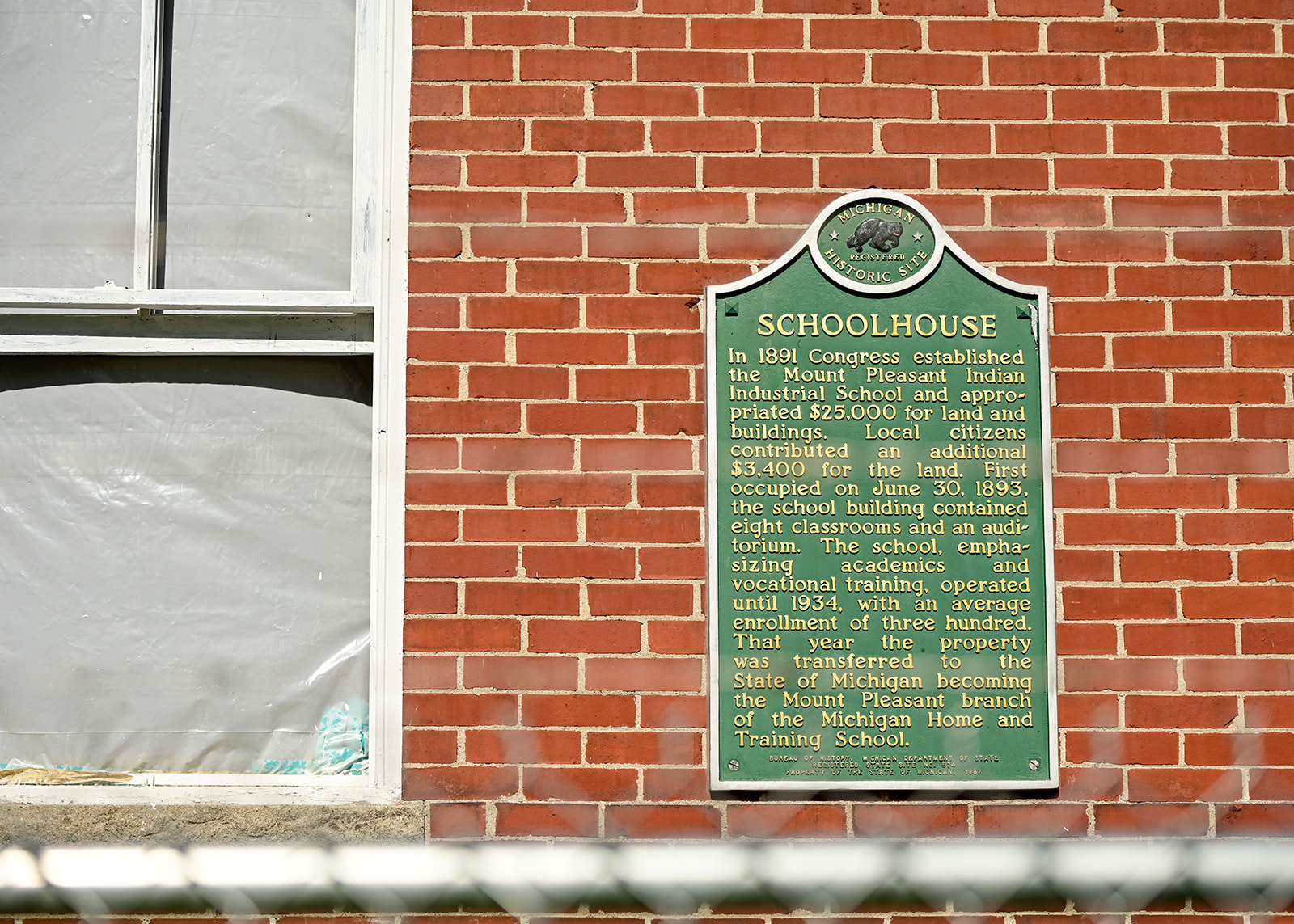
“I come here every year with my family,” Wethington said. “The name Sarah Watson that was read on the Roll of the Deceased, that was my great aunt, who ended up dying here.
“They didn’t keep records of what really happened here. Only these walls know. And these walls don’t talk,” said Wethington.
Although the walls of the MIIBS site are unable to talk, the people are: the Indian boarding school survivors, the descendants of those who attended and the relatives of those who didn’t make it out alive. The shame and burden marked by silence have slowly begun to lift among us.
This day-long memorial event has served our Community and our allies by lifting the silence by remembering those we physically lost on the school grounds, as well as those who became emotionally, mentally and culturally lost after the forced assimilation and removal of our most vulnerable: our children.
Each year, the HHR event onsite at the MIIBS begins with a Sunrise Ceremony at Mission Creek Cemetery for the day of healing.
“We have been hosting this event since 2008,” Shannon Martin, Match-E-Be-Nash-She-Wish Band of Pottawatomi Tribal Member, explained to the crowd. “The first year, we started out at the Health and Human Services Department (at Saginaw Chippewa Indian Tribe), and a handful of us walked to the site on the anniversary of its closing. Who was here for that?”
About five people raised their hands, all nodding in solemn remembrance of their first official sojourn to honor the children who attended MIIBS.
Sixteen years later, this year’s HHR event commemorated the 90th anniversary of MIIBS shuttering its doors for the purpose of being an Indian boarding school. With each passing year, a growing number attend the HHR event, with 2024 seeing more than 200 at the Sunrise Ceremony and close to 600 people attending the day-long memorial on the grounds.
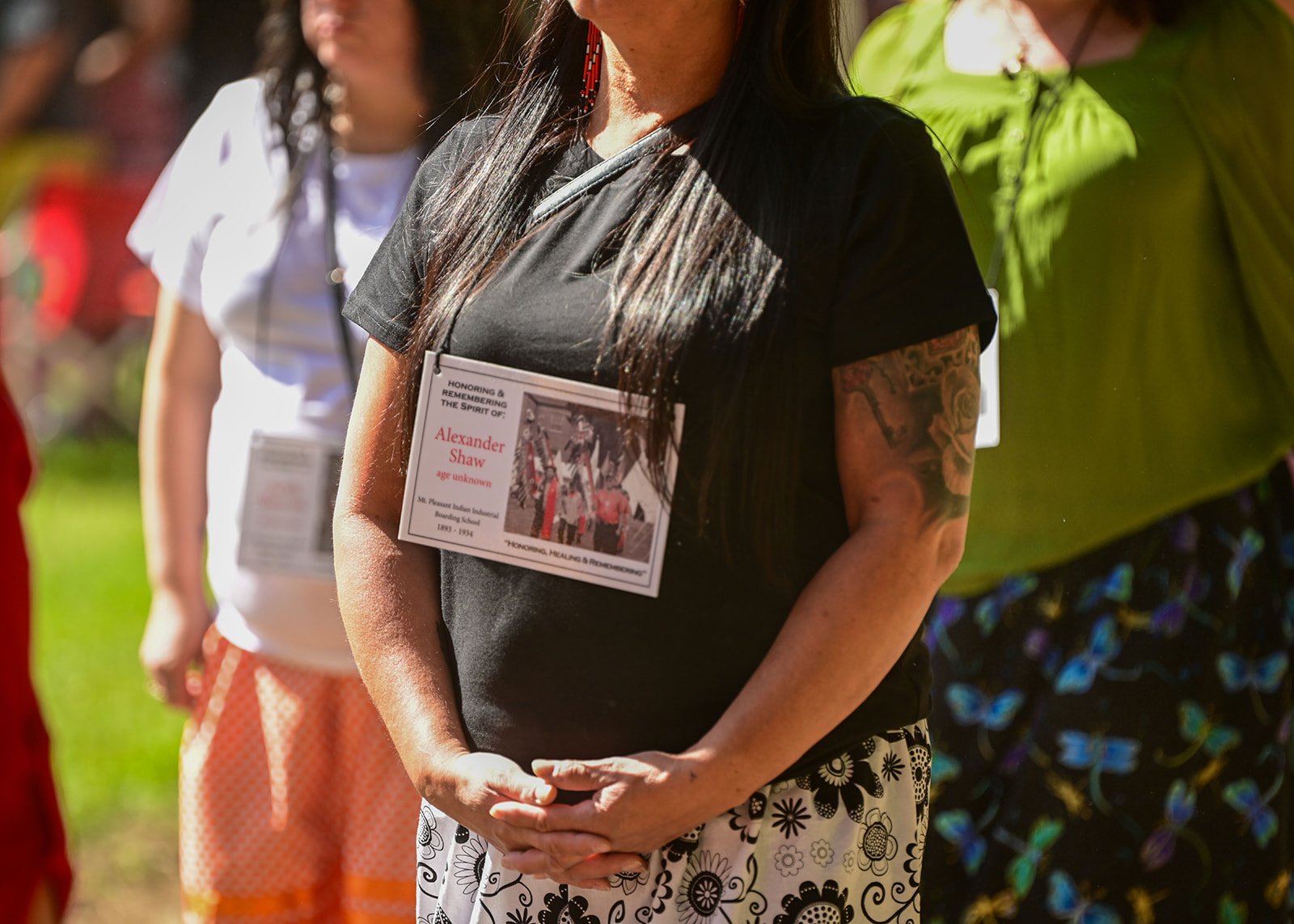
The Grand Entry for HHR is always somber, with Dancers donning placards with the names of each of the more than 300 children who had passed on the very grounds. Many passed from communicable diseases, like tuberculosis, from being in close quarters with so many children. Others’ causes of death will never be known.
The memorial featured the Student Roll Call, “Remembering the Deceased,” with an Honor Beat for each student who perished. Each year, the roll call takes as long as 12 minutes.
From 1893 until 1934, MIIBS had an average enrollment of 300 children each year during its height of operation. The children worked manually for hours a day, fed and clothed on mere pennies per day. Many of these little boys worked on nearby farms while many of the young girls performed the arduous task of laundry for much of the Mt. Pleasant community at the time.
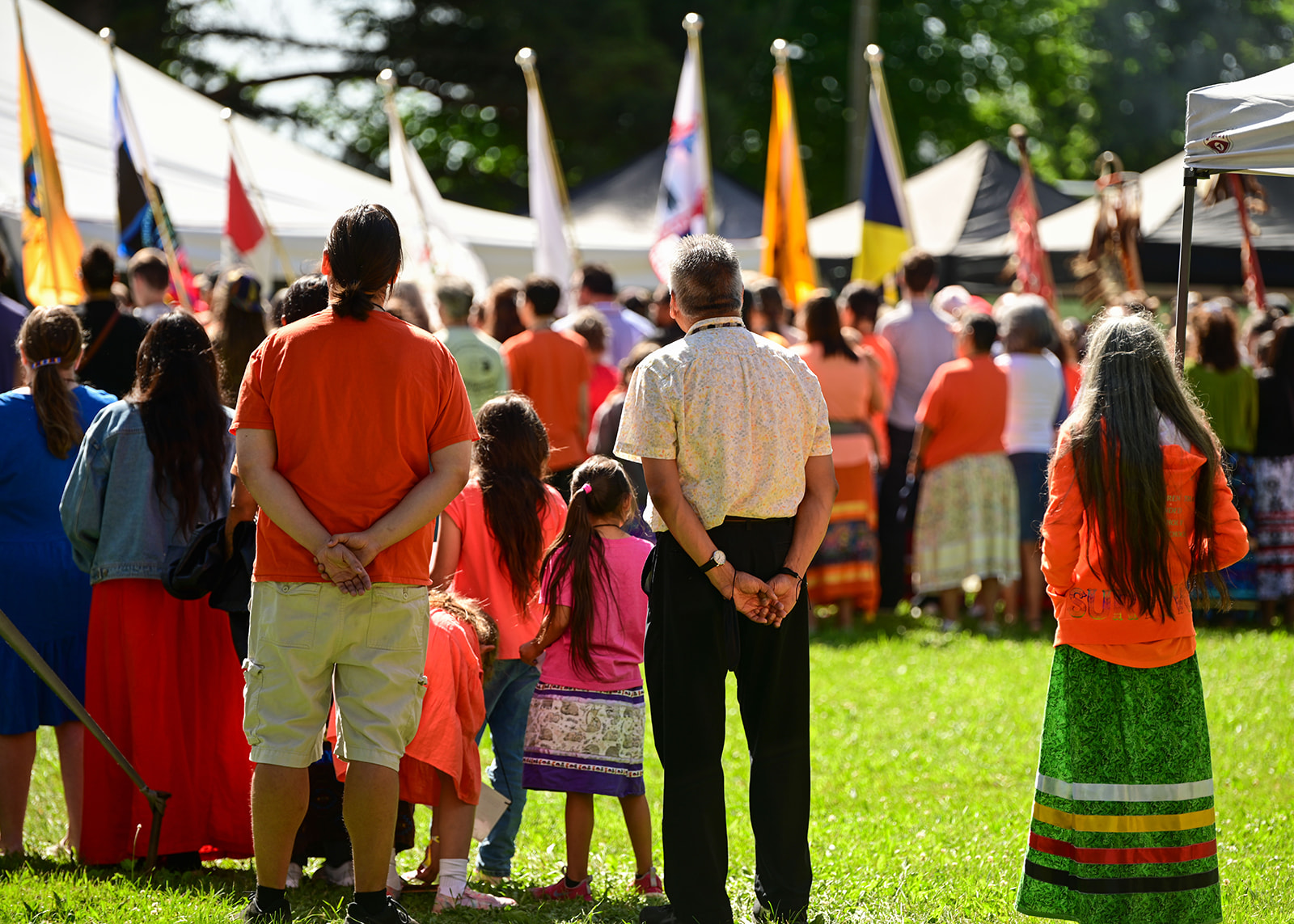
Although another boarding school, Holy Childhood in Harbor Springs, Michigan, remained operational in the 1980s, decades after MIIBS discontinued its operation, the Roman Catholic Church operated this school and its grounds. Since the school grounds were privately owned, in 2007, the walls of Holy Childhood were demolished by the Church, removing much physical evidence of its very existence.
To avoid a similar fate for MIIBS, the Saginaw Chippewa Indian Tribe and the City of Mount Pleasant have collaborated to secure the property for nearly 15 years.
Although the walls cannot talk, those survivors and those whose Ancestors and relatives who attended would be honored in our own way, through the land and the six buildings that remain. Plans for the site’s future were presented throughout the day, as MIIBS has received $1.7 million in funding for asbestos remediation, which is currently at the halfway point for the six remaining facilities.
“These walls feel heavy,” said Architect Christian Nakarado, Sault Ste. Marie Chippewa Indian Tribal Member, who has been working on the current and future plans for the site. Nakarado acknowledges that the grounds and buildings can only do so much as a memorial.
“Memorials are only as powerful insofar as people come to respect it, to care for it, to remember and to read the names, and that’s what we want to figure out here, how to embody HHR, not just once a year, but every time we come here,” said Nakarado.
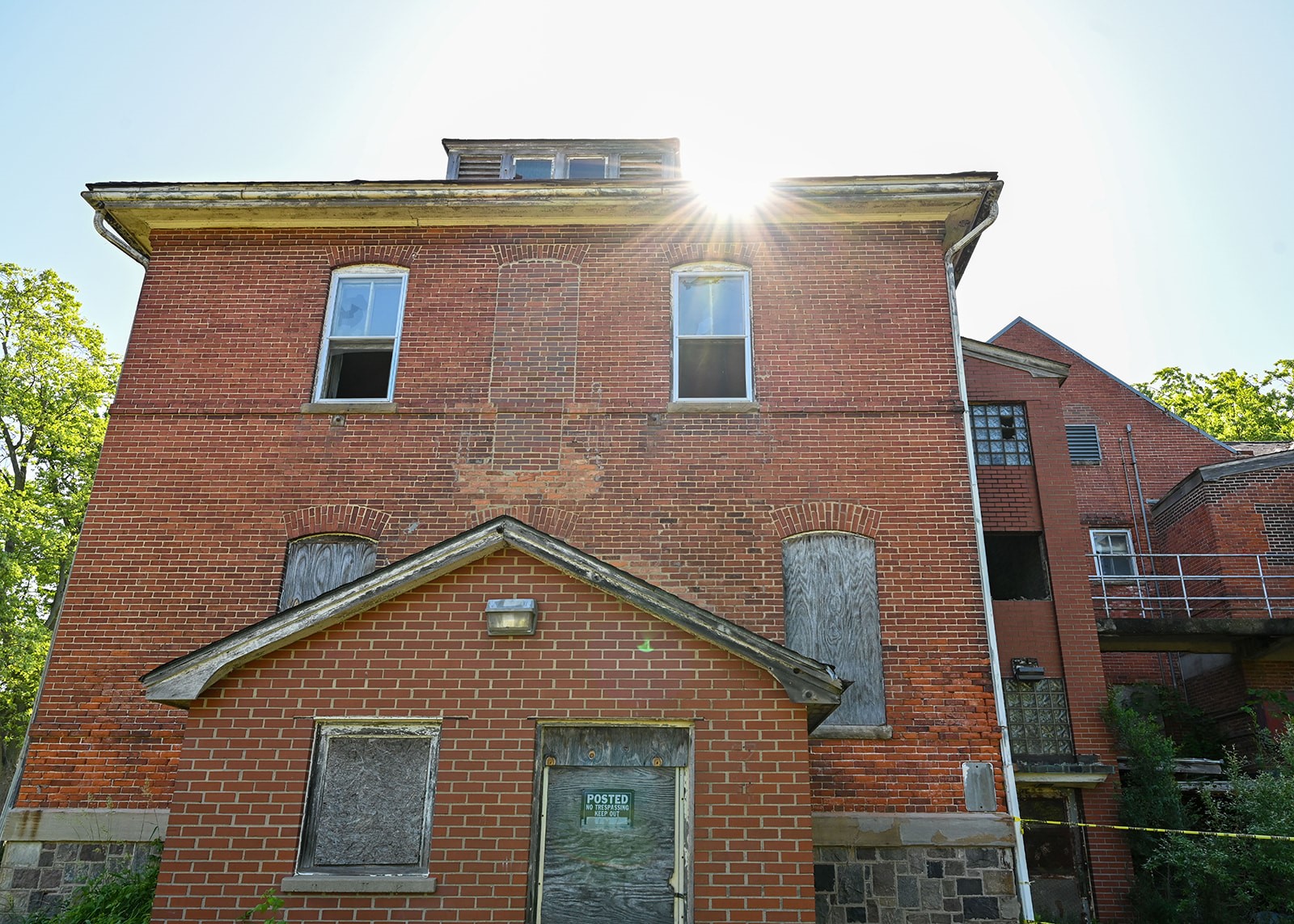
What happened on the grounds of MIIBS 90 to 130 years ago directly impacts what happens to this day.
“People don’t understand the intergenerational trauma we have experienced,” said Wethington. “They think, ‘Why don’t you quit your whining? Move on!’ I still have the trauma to this day. Because of this forced separation of my family through boarding schools, my grandfather was unable to commit to a single woman, became a serial cheater; my dad and his drinking and then my past drinking. Now I have quit, but it’s all because of this trauma.”
With brave people like Wethington now speaking about what actually happened — not just at MIIBS, but also at the other 520 boarding schools that operated within the U.S. over a period of more than 150 years— more avenues for official documentation are forming, all to accurately tell of what happened at boarding schools, including the Oral History Project.
The Oral History Project – The National Native American Boarding School Healing Coalition is coming to Michigan in September 2024. This project respectfully interviews, films and records the stories of survivors in their own words. Funded by the Department of the Interior (DOI), this “unprecedented effort” is part of the DOI’s Federal Indian Boarding School Initiative to create a permanent oral history collection.
A member of this project, Charlee Brissette, Sault Ste. Marie Chippewa Indian Tribal Member, asks those who are interested in being interviewed to sign up online at Oral History Project – The National Native American Boarding School Healing Coalition.
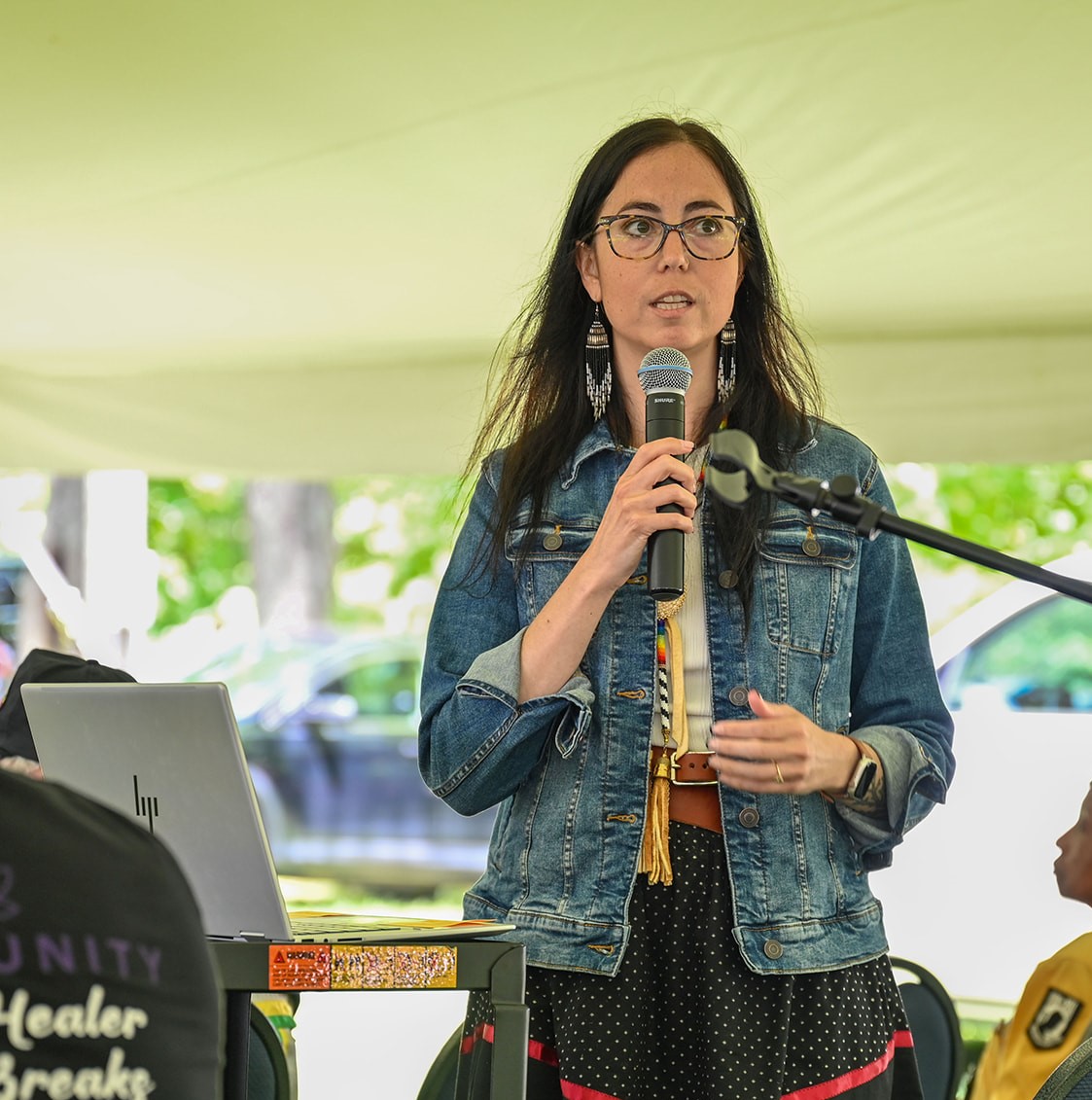
“Our goal is 20 interviewees from 20 states,” Brissette shared in their tentative project timeline. After she spoke, many survivors and descendants approached Brissette, wanting to share their stories.
The HHR event continually inspires others to lift the silence. After attending the HHR event in 2023, then 6-year-old Zhaaswshkobne Wemigwans, Saginaw Chippewa Indian Tribal Member, hosted the first youth-led Pow Wow on the MIIBS site on Michigan Indian Day, to “honor those kids who couldn’t Dance here.”
With this year’s day-long HHR event ending with the healing of the Jingle Dress Dancing, the event organizers and survivors are hopeful that the ongoing memorial for boarding school survivors, descendants and relatives will not end with these ceremonies or stop at the outskirts of the MIIBS property, but rather, they will continue to honor all who had to endure the boarding school era that still impacts our communities in many ways today.
For more information on the ongoing needs and plans of the MIIBS project, please visit Mt. Pleasant Indian Industrial Boarding School (MIIBS) (sagchip.org)
To view the full photo gallery, please click here.

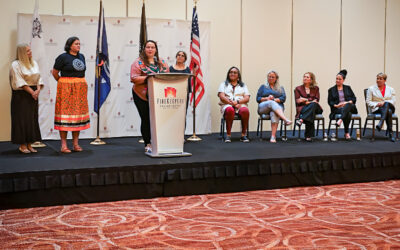

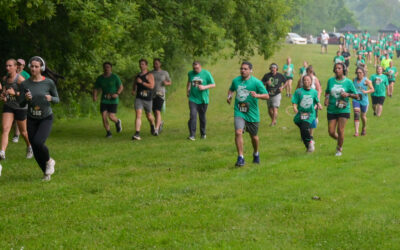
0 Comments